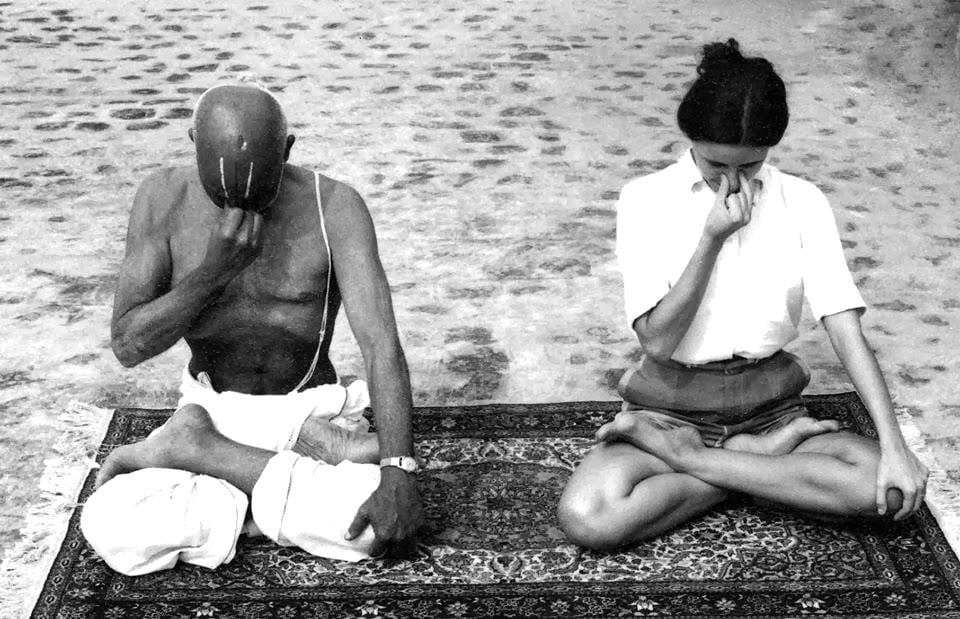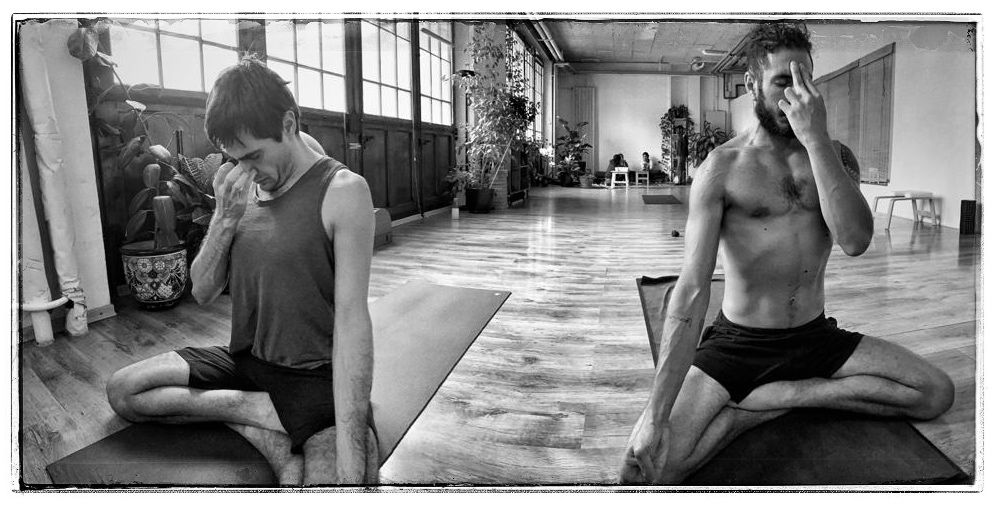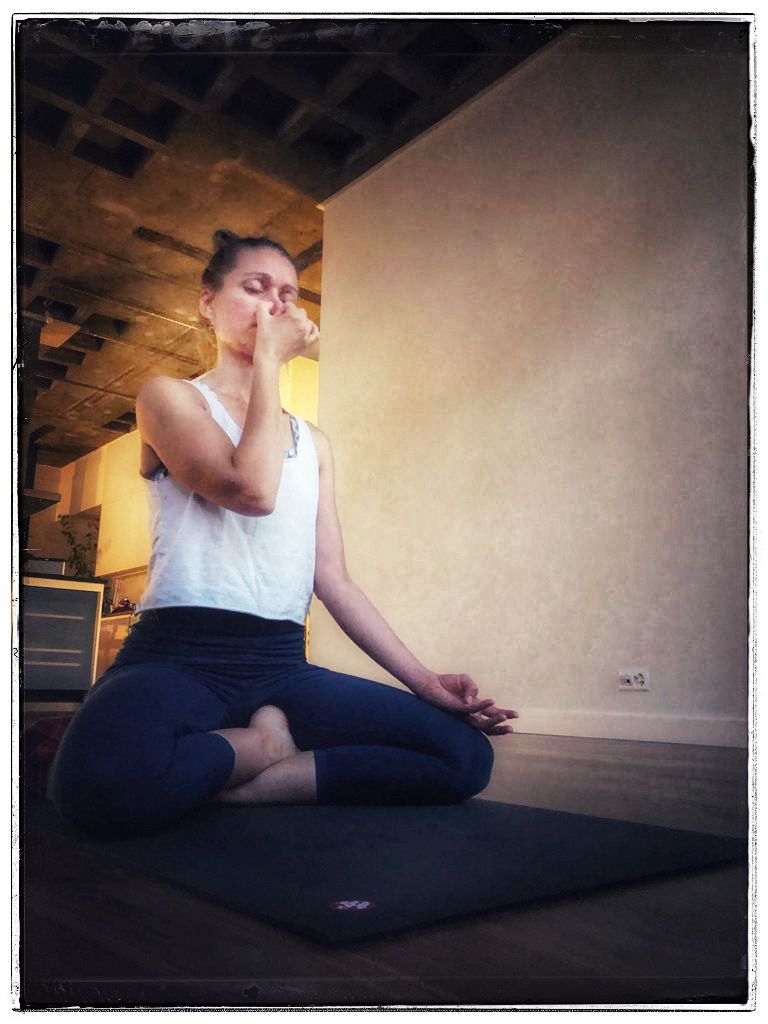
” As Long as there is breath in the body, there is life.
When breath departs, so too does life. Therefore, regulate the breath”
Hatha Yoga Padipikā (Ch.2:S.3)
At Ashtanga Yoga Montreux , students will have the opportunity to learn Pranayama (breathwork) one of the important limbs of Ashtanga Yoga. Students will learn and further explore:
- the anatomy of breathing and the difference between thoracic breathing and belly breathing
- ujjayi breath, used during the asana practice, and in pranayama
- the anatomy behind Mula bandha, Uddiyana bandha and Jalandhara bandha and how to activated these energy locks
- kriyas
Students with time will learn a few Pranayama exercises such as:
- Kapalabhati
- Nadi Shodhana
- Ujjayi Pranayama
- Sheeta Li
- Brahmari

DEFINITION AND PURPOSE OF PRANAYAMA
Pranayama is a compound noun made up of prana and ayama. the term prana can mean breath, but more often it refers to its subtle equivalent, the life force. Ayama means extension. Pranayama then means extension of life force. Although etymologically ” control of prana” or “direction of prana“cannot be read into the term pranayama (because of the central long a), many later traditional authors such as Ramana Maharishi have interpreted it exactly in this way.
” Yoga has become very popular around the world, but unfortunately this popularity extends only in asana (posture). It has gone so far that students now use the term yoga to refer to asana only, and pranayama is thought of as something exotic or strange. However, in yogic tradition pranayama has always taken centre stage and asana was looked at only as a preparation or groundwork for pranayama.” (Gregor Maehle)

Patanjali, the author of the Yoga Sutras offers several definitions of Pranayama. Firstly he describes it as the removing of agitation and turbulence from inhalation and exhalation. ( Yoga Sutra II.49) Lack of agitation and turbulence of the breathing pattern equates to a smooth flow of mind, making meditation achievable. After this is achieved, various kumbhakas (breath retentions), such as internal, external and midway suspension, are practiced with consideration of mental focus, time span and count until the breath is long and subtle. (Yoga Sutra II.50) This second definition makes clear that Patanjali saw pranayama not only as an extension of prana using Ujjayi breathing, but also as formal kumbhaka, with its length measured by count, while sitting in a meditation posture such as padmasana.
Through the practice of kumbhaka, tamas (torpidity) and rajas (frenzy) are removed from the mind and the original sattva (intelligence) shines through. With these impediments removed and the original state of mind restored, the yogi is now fit to perform the inner limbs, ie. the higher yoga of meditation.